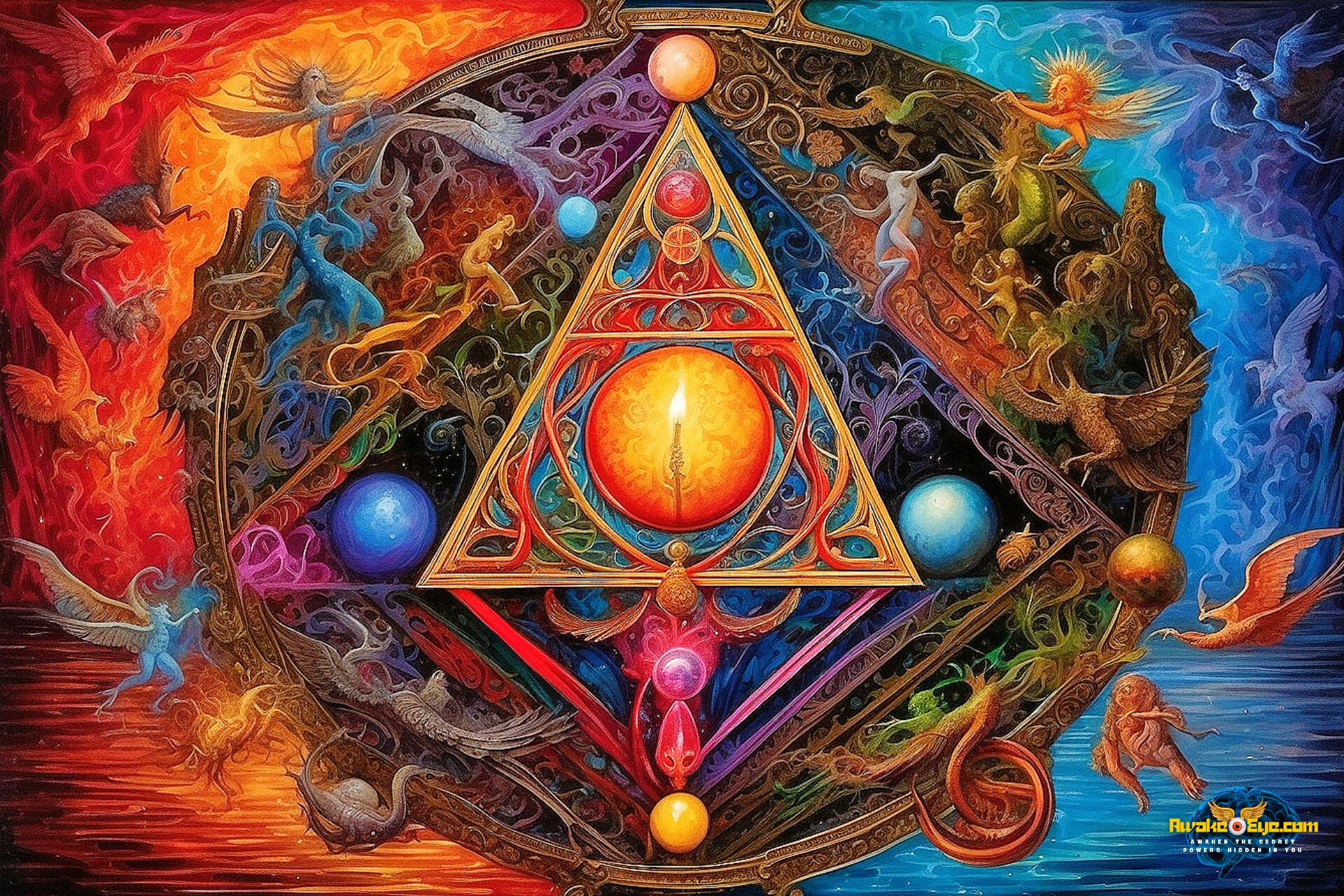Harmonizing Body and Spirit: Exploring the Mysteries of the Chakras
awakeeye.com March 24, 2024 0Translate Post:
In the realm of holistic health and spiritual practices, the concept of Chakras holds significant importance. Understanding the intricacies of chakras and their impact on our physical, emotional, and spiritual well-being can lead to profound personal growth and transformation.
Understanding Chakras
What Are Chakras?
Chakras, derived from the Sanskrit word for “wheel” or “disk,” refer to the energy centers within the subtle body. These energy centers are believed to correspond to different aspects of our physical, emotional, and spiritual selves and play a vital role in maintaining overall balance and harmony.
The Seven Main Chakras
According to ancient Indian traditions, there are seven main chakras that align along the spine, from the base to the crown of the head. Each chakra is associated with specific qualities, such as physical health, emotional well-being, and spiritual development.
- Root Chakra (Muladhara)
- Sacral Chakra (Swadhisthana)
- Solar Plexus Chakra (Manipura)
- Heart Chakra (Anahata)
- Throat Chakra (Vishuddha)
- Third Eye Chakra (Ajna)
- Crown Chakra (Sahasrara)
The Role of Chakras in the Body
Energy Centers of the Body
Chakras act as gateways for the flow of vital energy, known as prana or chi, throughout the body. When these energy centers are balanced and aligned, we experience optimal health and vitality. However, blockages or imbalances in the chakras can lead to physical illness, emotional disturbances, and spiritual stagnation.
Balancing Chakras
Balancing the chakras involves clearing any blockages or imbalances and restoring the free flow of energy throughout the body. This can be achieved through various holistic practices, including meditation, yoga, Reiki, and energy healing techniques.
Chakras and Mental Health
Emotional Well-being
The chakras play a crucial role in our emotional well-being, as each energy center is associated with specific emotions and psychological states. For example, the heart chakra governs love, compassion, and forgiveness, while the sacral chakra is linked to pleasure, creativity, and sensuality.
Stress Reduction
Balancing the chakras can help alleviate stress and anxiety by promoting relaxation, inner peace, and emotional stability. Practices such as meditation, breathwork, and mindfulness can help quiet the mind, soothe the nervous system, and restore harmony to the chakras.
Enhancing Spiritual Growth
In addition to their role in physical and emotional health, the chakras are also considered pathways to spiritual awakening and enlightenment. By purifying and activating the chakras, individuals can deepen their connection to their inner selves, higher consciousness, and the divine.
Techniques for Balancing Chakras
Meditation and Visualization
Meditation and visualization techniques are powerful tools for balancing the chakras and promoting overall well-being. By focusing attention on each chakra, visualizing them as vibrant energy centers, and using affirmations or mantras, individuals can clear blockages and restore balance to the subtle body.
Yoga and Movement
Yoga poses, or asanas, are specifically designed to stimulate and balance the chakras by opening up energy channels and releasing tension from the body. Practicing yoga regularly can help improve flexibility, strength, and energy flow, leading to greater physical and emotional vitality.
Sound Therapy
Sound therapy, such as chanting, singing bowls, or tuning forks, is another effective way to harmonize the chakras and promote healing. Each chakra is associated with a specific sound frequency, and listening to or chanting these sounds can resonate with the corresponding energy center, restoring balance and alignment.
Integrating Chakras into Daily Life
Mindfulness Practices
Incorporating mindfulness practices into daily life is essential for maintaining chakra balance and overall well-being. Simple activities such as deep breathing, mindful eating, and nature walks can help ground the body, calm the mind, and connect with the present moment.
Creative Expression
Engaging in creative expression, whether through art, music, dance, or writing, can stimulate the flow of energy through the chakras and foster self-expression and self-discovery. Creative activities allow us to tap into our inner wisdom, intuition, and innate creativity, promoting holistic healing and personal growth.
Healing Practices
Exploring various healing modalities, such as Reiki, acupuncture, or crystal therapy, can provide additional support for chakra balancing and energetic healing. These holistic approaches work on the subtle energy body to remove blockages, release stagnant energy, and promote vitality and well-being.
Conclusion
In conclusion, understanding and working with the chakras can be a transformative journey toward holistic health, emotional balance, and spiritual growth. By cultivating awareness of the subtle energy body and incorporating chakra-balancing practices into daily life, individuals can experience profound healing and self-discovery on all levels of their being.
FAQs
- How do I know if my chakras are imbalanced?
- Signs of chakra imbalance may include physical symptoms, such as chronic pain or illness, as well as emotional disturbances like anxiety, depression, or mood swings. Paying attention to your thoughts, emotions, and physical sensations can provide clues about the state of your chakras.
- What can I do to balance my chakras?
- There are many techniques for balancing chakras, including meditation, yoga, energy healing, sound therapy, and mindfulness practices. Experiment with different methods to find what resonates with you and incorporate them into your daily routine for optimal results.
- How often should I practice chakra-balancing techniques?
- The frequency of chakra-balancing practices depends on individual needs and preferences. Some people may benefit from daily practices, while others may find weekly or monthly sessions sufficient. Listen to your body and intuition to determine the best approach for you.
- Can chakra balancing help with physical ailments?
- While chakra balancing is not a substitute for medical treatment, it can complement conventional therapies and promote overall health and well-being. Many people report improvements in physical symptoms, such as pain or fatigue, after addressing underlying energetic imbalances.
- Are there any risks associated with chakra-balancing practices?
- Chakra-balancing practices are generally safe for most people, but it’s essential to listen to your body and practice self-care. If you experience any discomfort or unusual symptoms during chakra-balancing exercises, it’s important to stop and reassess your approach. Additionally, individuals with certain medical conditions or who are pregnant should consult with a healthcare professional before engaging in intensive energy work or alternative healing modalities. While chakra balancing can offer numerous benefits, it’s essential to approach these practices mindfully and with awareness of your own limitations and needs.









